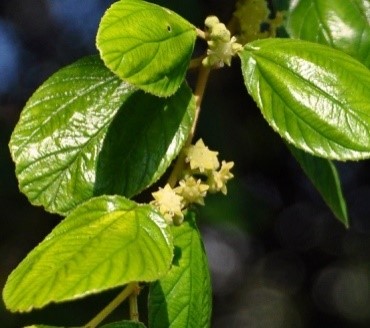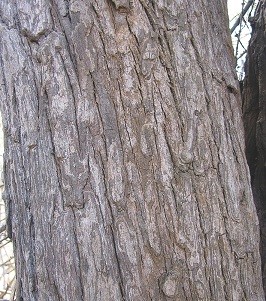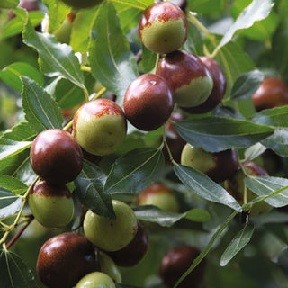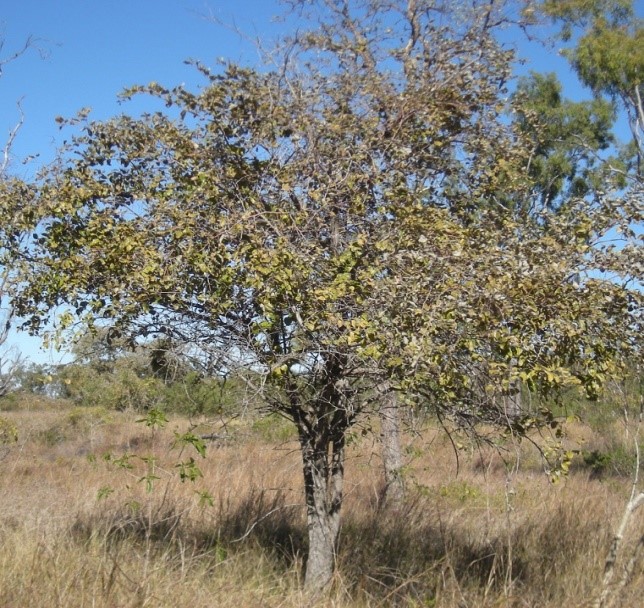Trees
Ziziphus mauritiana Lam.
Ziziphus mauritiana Lam.
Description :
A spiny deciduous or evergreen shrub or small tree 12 m tall with a diameter of 40 cm. The crown is spreading with drooping branches. The leaves are simple elliptical to rounded 2.5 to 6 cm long and 1.5 to 5 cm wide. The leaf tips are slightly rounded with finely wavy-tooth margins. The leaves are shiny green and hairless on the tops with dense whitish hairs underneath. Spines are curved. Brownish, and 3 to 6 mm long. On harsh sites it is a dense shrub 3 to 4 m tall. The bole is straight, and the bark is light to dark grey with many deep furrows. The flowers are small 5 mm across in clusters and are quite fragrant, yellow, densely hairy and bloom between April and October. The fruit is shiny orange-red or reddish-brown and edible, 2 to 2.5 cm long. The seed matures from December through March. It is susceptible to fruit flies and defoliating insects. These pests can be controlled by timely spraying of insecticides. It is reproduced from, seed and by vegetative means. Seed can be stored up to 3 years without refrigeration and maintain viability. Cracking the hard seed coat before planting will increase germination. Seed is kept in cow dung for 10 days to hasten germination. Grains are very fine; Wood is reddish brown having specific gravity of 0.93 and a calorific value of 5900 kcal/kg.
Distribution :
The tree is native to South Asia including Pakistan. It has been
successfully cultivated in many parts of the world. It can be seen throughout
Pakistan, but it grows best at lower elevations in the Punjab, KP, Sind and
Balochistan and is a commonly seen tree in the rural and arid landscape. An
intolerant tree that has no particular soil requirements and grows on a variety
of sites. It. prefers a warm temperate to sub-tropical to tropical climate and
is adapted to a precipitation zone of 600 to 1500 mm/yr within a temperature
range of -5 to 50°C. It can withstand drought periods and is frost hardy. It
prefers an elevation range up to 600 m.
Uses :
In
the past this tree has been planted on farms for its fruit, but also has
potential for use in reforestation projects and erosion control on denuded
watersheds. The fruit is valuable. It has excellent potential as a farm forestry
tree. A fast-growing tree. Height growth of 7 m in a five year period has been
reported. Grafted varieties produce much large & edible fruit. Also used
for fuel, charcoal, agricultural purposes.



